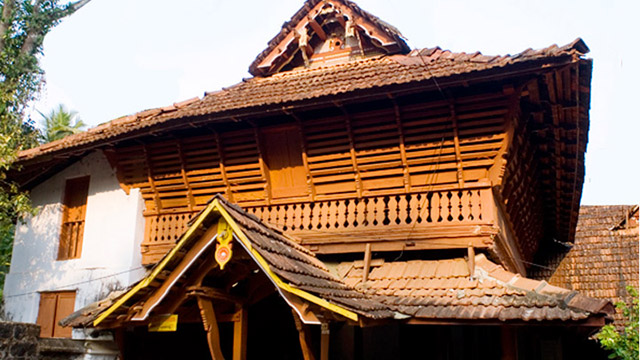Poonjar Palace, located in the enchanting village of Poonjar in the Kottayam district of Kerala, South India, is a magnificent testament to the state’s rich royal history. This well-preserved palace, also known as Poonjar Rajah’s Palace, offers visitors a unique opportunity to step back in time and explore the grandeur and opulence of Kerala’s royal heritage. In this article, we will delve into the history, architecture, and attractions of the Poonjar Palace.
Historical Significance
Poonjar Palace was the residence of the Poonjar dynasty, a princely state that was once a part of the Travancore region. The palace’s history dates back to the 18th century when it was constructed by the Poonjar Rajah, a prominent ruler of the region. The palace served as the seat of the Poonjar dynasty, which played a significant role in the socio-cultural and political landscape of the area.
Architecture and Design
The architecture of Poonjar Palace is a captivating blend of traditional Kerala style and European influences. Key architectural features include:
- Wooden Architecture: The palace is primarily built using wood, featuring intricately carved wooden ceilings, columns, and balustrades. The wooden carvings showcase exquisite craftsmanship.
- Mural Paintings: The palace is adorned with beautiful mural paintings that depict scenes from the Hindu epics, Ramayana and Mahabharata, as well as other mythological and historical stories.
- Antique Artifacts: The palace houses a remarkable collection of antique artifacts, including weapons, sculptures, and household items, providing insights into the royal lifestyle of the era.
- Nalukettu Style: The palace follows the traditional Kerala architectural style known as “Nalukettu,” characterized by a central courtyard surrounded by a series of rooms.
Attractions and Highlights
- Poonjar Palace Museum: The palace now serves as a museum, showcasing a wide array of artifacts, historical documents, and royal belongings. Visitors can explore the various rooms and corridors filled with relics from the past.
- Chinababu’s Carriage: One of the prominent attractions within the palace complex is the antique carriage belonging to the Diwan of Travancore, Rajah Sir C. Rama Varma, also known as “Chinababu.” The carriage is a symbol of the region’s royal heritage.
- St. Mary’s Church: Adjacent to the palace is St. Mary’s Church, an ancient church with historical significance. The church features beautiful stained glass windows and is a place of worship and reflection.
- Poonjar Kottaram: Located nearby is the Poonjar Kottaram, another historic building that was once used as a guesthouse for dignitaries. It’s worth a visit to appreciate its architectural beauty.
Visiting Tips
- Respect the historical and cultural significance of the palace by following any rules or guidelines provided by the authorities.
- Photography may be restricted in certain areas, so it’s advisable to inquire about photography policies upon entry.
- Poonjar Palace is a serene and peaceful place, making it ideal for a leisurely visit and exploration.
How to Reach
- By Air: The nearest airport is Cochin International Airport, approximately 80 kilometers (49.7 miles) away from Poonjar. From there, you can hire a taxi or use public transportation to reach the palace.
- By Rail: The nearest railway station is Kottayam Railway Station, which is well-connected to major cities in Kerala and other parts of India. Poonjar is about a 2-hour drive from Kottayam.
- By Road: Poonjar is accessible by road and can be reached by taxi or private transport from nearby towns and cities in Kerala.
Conclusion
Poonjar Palace is a captivating destination that offers a glimpse into Kerala’s royal heritage and architectural grandeur. With its blend of traditional Kerala architecture and European influences, the palace is not only a museum but also a living testament to the history and culture of the region. A visit to Poonjar Palace allows travelers to step into the past and experience the opulence and elegance of Kerala’s royal legacy.

